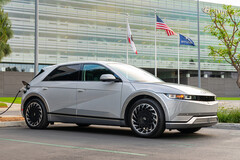
Research appears to counsel that, though federal EV tax incentives and decrease price of possession are attracting consumers to the electrical car market, many EV house owners solely shopping for a further electrical car as a substitute of changing an ICE one. EV charging infrastructure remains to be seen as a serious barrier to entry, regardless of increasing charger availability and a bent for house owners to cost at house.
The US federal tax incentives have been put in place to ease the price of electrical autos and increase adoption, in addition to strengthen the US electrical car manufacturing business. As a results of the decreased price of entry and the general discount within the lifetime price of EVs, even in additional rural areas in states like Texas. Buyers usually cite growing refuelling price when transferring over to an electrical car, in keeping with Electrek.
On the opposite hand, whereas electrical car tax incentives have served their goal to increase electrical car adoption, it has additionally been reported that as many as 44% of electrical car house owners have no less than two different autos. If so many EV house owners are investing in electrical autos as a 3rd or fourth automobile, it is protected to say that the incentives aren’t addressing the vast majority of the US inhabitants. Only round 22% of US residents personal three or extra autos.
While it seems that extra electrical autos are going to prosperous households that even have ICE autos, the elevated EV adoption has resulted in a discount in gasoline consumption within the US. Overall, gasoline utilization has dropped by 7% since 2017, which may be attributed, no less than partially, to an elevated portion of the labour pressure working from house.
EV consumers’ persistent reliance on conventional ICE autos is echoed in information that signifies that charging infrastructure remains to be an enormous concern for potential electrical car house owners, regardless of the overwhelming majority of electrical car charging taking place at house. One proposed resolution to chop reliance on fossil fuels and increase EV adoption is to focus on bigger parts of the inhabitants, and to solely present EV incentives to drivers who’re changing a gasoline-powered automobile with an electrical one.
Another resolution would see these electrical autos goal industrial customers and the ten% of drivers that produce essentially the most emissions — a system that appears to be making headway in Vermont. It is usually recommended that changing gasoline superusers and ride-share corporations, like Uber, to electrical autos could end in higher positive factors on the emissions entrance. It appears unlikely that electrical autos will attain the identical kind of adoption seen in some European nations till the collaborative efforts between governments and personal entities begin to goal a extra various viewers and customers that devour essentially the most gasoline.
Buy a Cable Shield Electric Vehicle Charging Cable Protector on Amazon.
Julian van der Merwe – Magazine Writer – 187 articles revealed on Notebookcheck since 2022
My curiosity in tech began in highschool, rooting and flashing my Motorola Defy, but I actually fell down the rabbit gap once I realised I might overclock the i7 930 in my Gigabyte pre-built PC. This tinkering dependancy ultimately lead me to check product design in college. I feel tech ought to enhance the lives of the individuals utilizing it, irrespective of the sphere. I prefer to learn and write about laptops, smartphones, software program and traits in expertise.
Julian van der Merwe, 2023-06- 6 (Update: 2023-06- 6)
…. to be continued
Read the Original Article
Copyright for syndicated content material belongs to the linked Source : NotebookCheck – https://www.notebookcheck.net/EV-tax-incentives-increase-adoption-but-continued-reliance-on-ICE-vehicles-limited-charging-infrastructure-damper-excitement.723394.0.html
